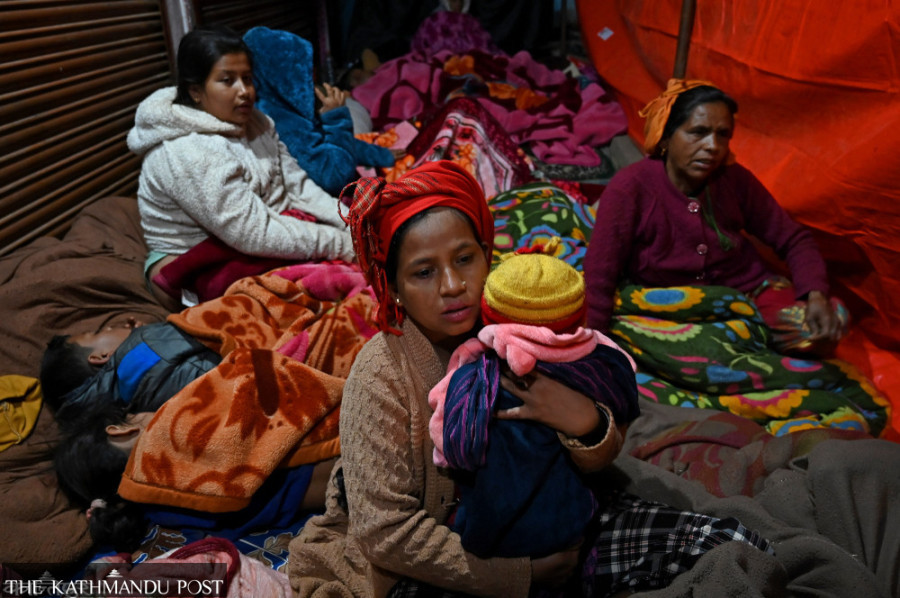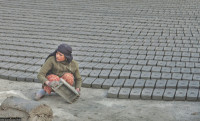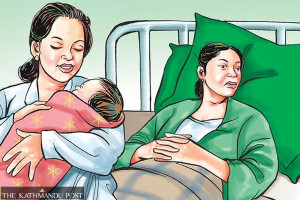Columns
Mental health support during disasters
Disaster preparedness should address survivors’ emotional and psychological needs.
Aakriti Karki
Whenever there is a mass casualty, coverage of the casualties and discussion of the death toll are usually the main focus. Many find it hard to look away when a disaster unfolds right before our eyes. Media coverage, YouTube channels, platforms like X, TikTok and Instagram have all played their role in becoming spaces for news and information during critical times. However, when the news, distressing footage and first-hand experiences are accessible to all, it is crucial to wonder how events like these are affecting families who may be waiting to hear from a loved one engulfed by the tragedy, people who have survived similar traumas in the past, and families who have lost a loved one to such tragedies.
When tragedies claim scores of lives, news media or people on other public platforms race to find what went wrong and how it could’ve been mitigated. Unfortunately, talks about the psychological trauma and grief that follow these events are rare.
Psychological trauma is the invisible damage that occurs not only from living through a tragic event but also from witnessing it—an essential characteristic often discounted by news outlets and social media platforms. Just as it is human to be curious about events, it is also a common human trait to experience physiological stress in response to these events.
Grief, on the other hand, is a normal human reaction that each of us can feel. When processed healthily, grief can help us build resilience. Unfortunately, it is usually demonised as a sign of weakness. Oftentimes, people return to their baseline levels of functioning after a specific period. However, for kids and some adults, the road to emotional recovery may not be as straightforward. Sometimes, the bereavement process may last over six months. Extended periods of grief occurring after a loss of a loved one, “at least a year ago for adults, and at least 6 months ago for children and adolescents,” along with other symptoms, is what psychiatrists call the “prolonged grief disorder”.
While there is much emphasis on“disaster preparedness”, there is no conversation regarding the mental health effects of these events on the general public. One might argue that the immediate concern should be saving the lives on the ground, the ones in immediate danger. However, we must pay attention to the increase in suicidal thoughts and suicide that a traumatic event can influence. A study that assessed post-disaster prevalence of suicidal ideation and suicide attempts concluded that prevalence rates of suicidal ideation were estimated at 12.9 percent and suicide attempts were estimated at 8.8 percent for the general population, respectively. Despite the limitations of this study, it highlights the need to prioritise those who will be living with the tragedy, not just the ones who lost their lives.
While news channels are adept at using heartfelt sentiments, they have the duty to mention resources where those experiencing trauma can seek help. News outlets and other media platforms are also responsible for the impact distressing news can have on an audience. Fictional content has ratings and advisory notices to ensure age-appropriate viewing; similar guidelines should be implemented for real-life events as well. In addition to providing a “trigger warning,” it is paramount that news outlets also mention the helplines for mental health crises.
Many organisations in the United States recognise that grief and psychological traumas are triggers of a domino effect within the realm of mental illness. As a result, the American Psychiatric Association (APA), the Center for the Study of Traumatic Stress, the Substance Abuse and Mental Health Services Administration (SAMHSA) and the National Child Traumatic Stress Network (NCTSN) have compiled fact sheets and resources that are accessible to both the general public and health professionals.
The specific branch of psychiatry that speaks about the effects of disasters, artificial or natural, is called Disaster Psychiatry. Training psychiatrists in this area would require introducing fellowships, which are currently nonexistent in Nepal. This has become a major systemic pitfall that hinders the advancement of mental health professionals in our country. In the absence of such fellowships, pre-existing content from long-standing foreign institutions can serve as inspiration for developing mental health-related practices and curricula within Nepal, which is prone to various natural disasters.
Disaster preparedness should encompass steps to address the emotional and psychological trauma that survivors endure. The lack of proper emotional and mental support can lead individuals to lean on unhealthy coping mechanisms like excessive drinking, smoking and/or taking drugs. Providing mental support, either through quick screening tests or by assessment from a psychiatrist, should be a standardised procedure. While most illnesses require a physical appointment, psychiatric consultations can be conducted over the phone or via video call, making them viable in resource-limited settings. This could be a pivotal step in preventing a society from losing another individual to suicide or substance abuse. These are, after all, the secondary casualties of a mass tragedy.
Along with Psychological First Aid (PFA), group therapies or process groups are effective ways to support individuals who have collectively witnessed a tragedy unfold. Apart from therapies, it is crucial to address any underlying mental illness that individuals may have. Most mental illnesses, notably PTSD, anxiety disorders, depression and bipolar disorder, are triggered during emotionally stressful times. It is imperative to acknowledge them during such emotionally inflamed moments.
Stakeholders must recognise the impact that tragic events have on the moods of their staff, especially first responders, camerapeople, news reporters, and the viewers. We must collectively help one another during times like these. Faith-based congregations, school assemblies and staff meetings are helpful ways to acknowledge the trauma witnessed and offer resources. The modern-day sufferings differ from those faced by humans thousands of years ago. It is high time we recognised how our evolving interactions collectively impact us.




 9.12°C Kathmandu
9.12°C Kathmandu















